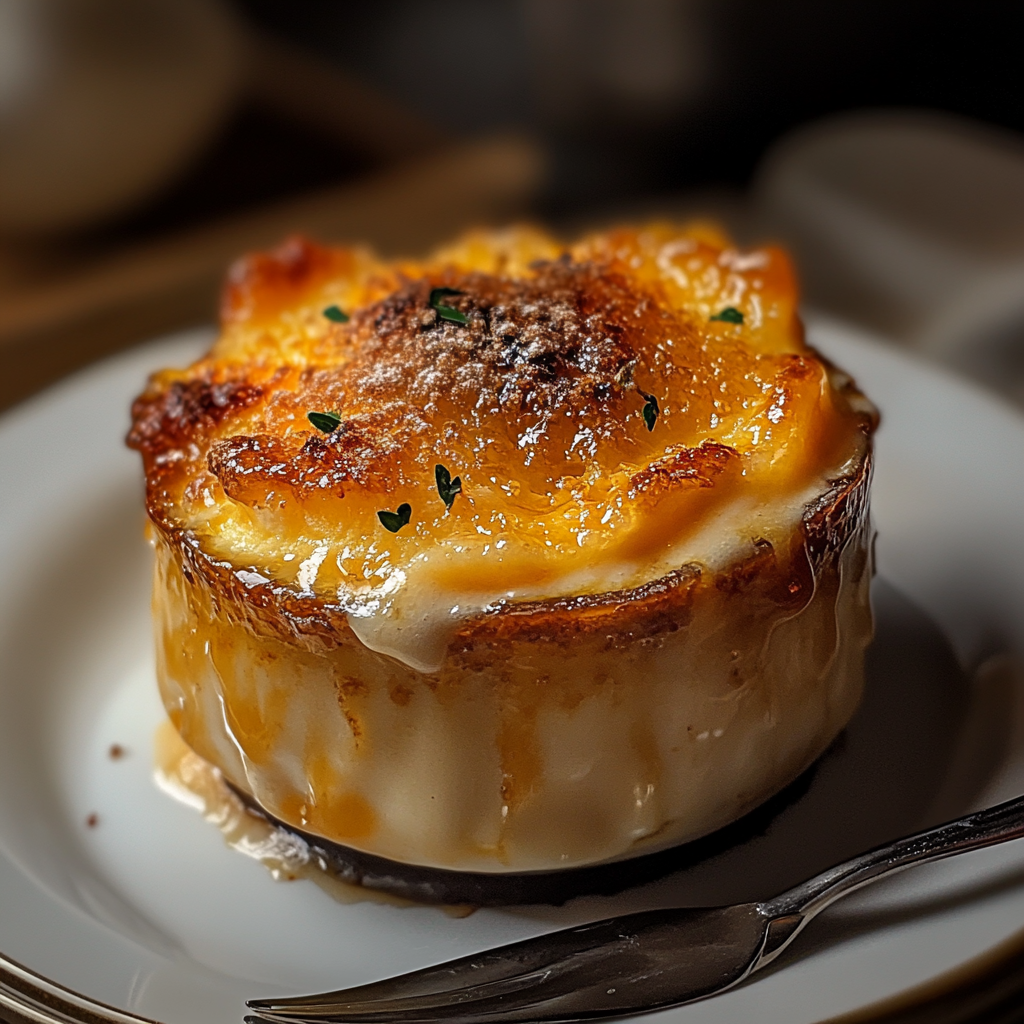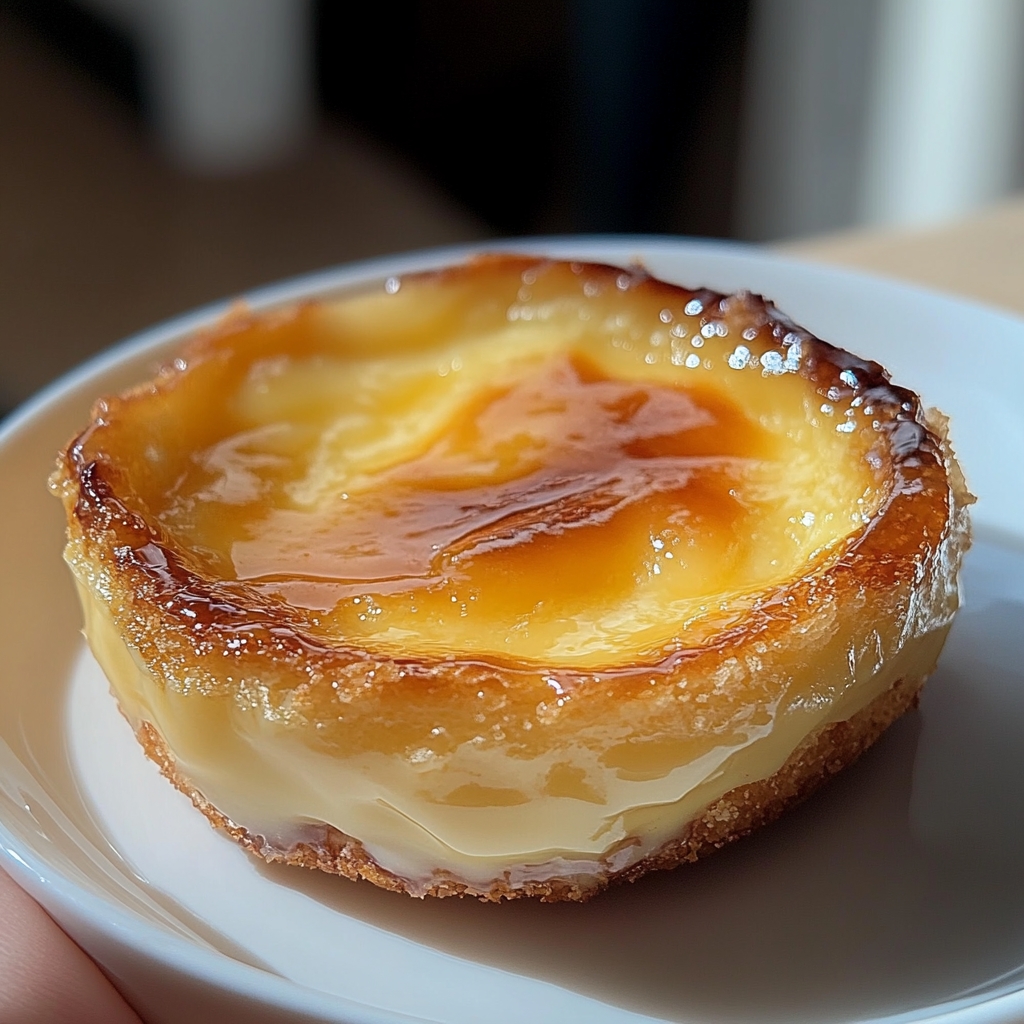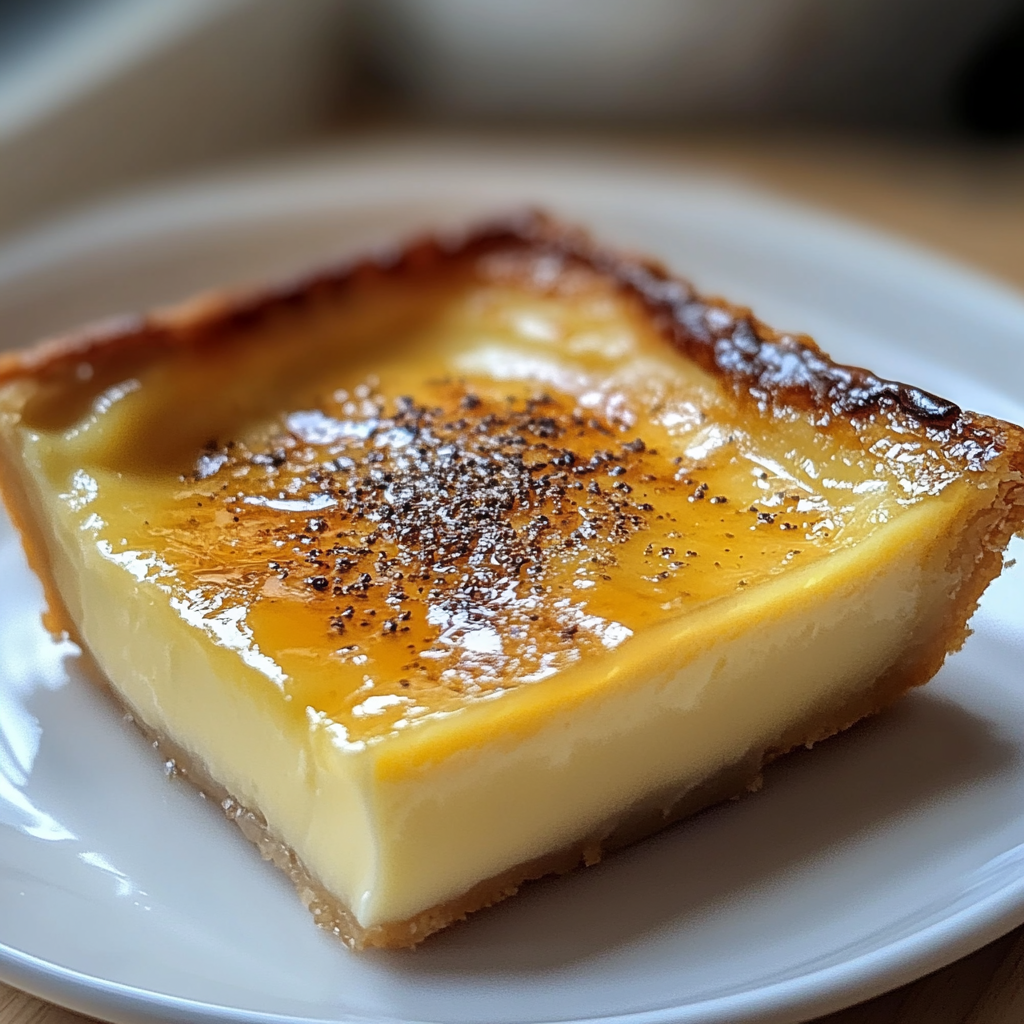
Introduction
Crème Brûlée is a dessert that evokes sophistication and indulgence, often gracing the menus of upscale restaurants and charming cafes. But despite its luxurious reputation, there is an age-old question that food enthusiasts continue to debate: Is Crème Brûlée actually French? By examining its origins, cultural ties, and global journey, we can unravel the story of this celebrated dessert.
The dish’s allure is not merely in its taste but also in its presentation. The artful caramelization of sugar, followed by the rich creaminess underneath, creates a sensory experience. This dessert is a testament to the artistry of culinary traditions, but its story is layered and multifaceted, much like its flavors.
Table of Contents
Origins of Crème Brûlée
The history of Crème Brûlée is as rich as its creamy custard. While many associate this dish with French cuisine, its true origins are less straightforward. Historical records suggest similar recipes existed as early as the 17th century, appearing in cookbooks from France, Spain, and even England. The defining characteristic—a smooth custard base topped with caramelized sugar—is rooted in the medieval culinary traditions of Europe.
Dive deeper into these culinary differences to explore their impact on Crème Brûlée’s identity.
Key Historical Milestones:
- Spain: The Catalan dessert Crema Catalana, first documented in the 14th century, bears striking resemblance to Crème Brûlée. The Catalans claim their version predates the French adaptation, further complicating the narrative.
- France: The name “Crème Brûlée” appeared in French cookbooks in the late 1600s, cementing its association with French cuisine. French culinary schools later popularized the dish internationally.
- England: A 17th-century recipe called “burnt cream” became popular in English households, fueling the debate over its origin. English chefs of the time often added unique touches like floral flavorings, setting it apart from its continental counterparts.
The presence of similar desserts across multiple countries reflects how culinary innovations often traveled and adapted to local preferences during Europe’s medieval and early modern periods.
Is Crème Brûlée French or British?

The question, Is Crème Brûlée actually French?, is not easily answered. While its name is undoubtedly French, historical evidence points to strong English ties.
- French Argument: The dessert’s name, meaning “burnt cream,” directly references its French roots. The inclusion of vanilla, introduced to France in the 17th century, suggests French culinary influence. French chefs were also known for their mastery of custard desserts.
- British Argument: Similar desserts appeared in English recipes, particularly at Trinity College in Cambridge, where “Trinity Cream” was a celebrated dish. The use of a branding iron to caramelize sugar points to English innovation. Some argue that the technique, not the recipe, defines the dessert’s true origin.
Transitioning between these culinary traditions underscores the shared history of European gastronomy, blurring national boundaries. What makes this debate so intriguing is the passion with which both sides defend their claims, highlighting the universal love for Crème Brûlée.
The French Tradition of Crème Brûlée
In France, Crème Brûlée is synonymous with elegance and artistry. The dessert aligns perfectly with French cuisine’s emphasis on balance and presentation.
Key Features in French Cuisine:
- Ingredients: French recipes rely heavily on high-quality cream, eggs, and sugar to create the signature velvety texture. The subtle flavor of vanilla or citrus zest enhances its natural sweetness.
- Techniques: The caramelized sugar layer is achieved with a handheld torch, creating a delicate, glass-like crust. This method ensures precision and uniformity, hallmarks of French cooking.
- Pairings: Often served with fresh fruits or aromatic herbs, it complements French dining aesthetics. Variants may include a hint of liqueur like Grand Marnier for added sophistication.
By preserving its roots, French chefs have elevated Crème Brûlée to iconic status, ensuring it remains a cornerstone of their culinary heritage. The question, Is Crème Brûlée actually French?, becomes a matter of pride for many.
The English Influence on Crème Brûlée
Despite its French name, the English have played a significant role in shaping this dessert. The Trinity College tradition of “burnt cream” offers compelling evidence of British influence.
Hallmarks of the English Version:
- Custard Base: Thicker and less sweet than French versions, emphasizing simplicity. The British version often focuses on natural dairy flavors, using minimal additional ingredients.
- Sugar Caramelization: Branding irons, rather than torches, were historically used to create the caramelized topping. This technique reflects the practical and rustic approach of English kitchens.
- Adaptations: English recipes often included spices such as nutmeg or cinnamon, showcasing regional preferences. These spices were widely available in England due to its colonial trade networks.
By integrating these techniques, the English version offers a distinct interpretation, further fueling the debate: Is Crème Brûlée actually French? The cultural exchange between these nations ensures both traditions remain respected.
Cultural Impact of Crème Brûlée
Beyond its culinary origins, Crème Brûlée has cemented its place as a symbol of luxury. It represents more than just a dessert; it is an experience.
Why It Captivates:
- Visual Appeal: The golden, caramelized crust is instantly recognizable and enticing. It often serves as a centerpiece for dessert courses.
- Textural Contrast: The interplay of crisp sugar and creamy custard makes it unforgettable. This unique combination has inspired countless chefs to recreate and reinterpret the dish.
- Cultural Associations: Featured in movies, literature, and art, it signifies refinement and indulgence. Its portrayal in pop culture reinforces its status as a luxury item.
Transitioning from a local delicacy to a global icon, Crème Brûlée embodies the universal love for culinary creativity. Its rich history adds depth to its modern-day appeal.
How Crème Brûlée Became a Global Dessert
Today, Crème Brûlée is a staple in fine dining establishments worldwide. Its journey from European kitchens to international acclaim highlights the adaptability of its recipe.

Global Adaptations:
- Asia: Variations incorporate flavors like matcha or coconut milk, blending local ingredients with traditional techniques. These adaptations showcase the dessert’s versatility in catering to diverse palates.
- America: Often enhanced with bourbon or seasonal fruits, it reflects regional tastes. American chefs frequently experiment with creative toppings, such as salted caramel or chocolate shards.
- Middle East: Infused with rosewater or cardamom, adding depth and cultural significance. These spices create a fusion of Middle Eastern and European culinary traditions.
The dessert’s ability to evolve while retaining its essence ensures its enduring popularity. The ongoing question, Is Crème Brûlée actually French?, continues to intrigue food lovers, contributing to its mystique.
Key Ingredients of Crème Brûlée
Crème brûlée, a classic dessert, relies on a handful of simple yet essential ingredients to achieve its creamy texture and caramelized top. These ingredients include:
- Heavy Cream: The base of crème brûlée, heavy cream provides the dessert’s rich and silky texture.
- Egg Yolks: These act as a natural thickener and contribute to the custard’s velvety consistency.
- Sugar: Granulated sugar sweetens the custard while also forming the crispy caramelized top.
- Vanilla: Whether from vanilla pods or extract, this ingredient delivers the signature flavor of crème brûlée.
While these components seem basic, their quality makes a significant difference. Using fresh, high-quality ingredients ensures the dish retains its luxurious feel.
Why These Ingredients Matter
Transitioning from one element to the next, you’ll notice how each plays a pivotal role. The balance between richness from cream and egg yolks, sweetness from sugar, and aroma from vanilla creates a dessert that’s as simple as it is indulgent.
Preparing Crème Brûlée Like a French Chef
Making crème brûlée is an art that requires precision. While it’s a straightforward process, mastering it ensures an authentic, French-inspired experience. Here’s how:
Step-by-Step Process
- Preheat Your Oven: Set your oven to 325°F (163°C) and prepare a water bath to ensure even cooking.
- Mix the Custard Base: Whisk egg yolks and sugar until they’re pale and creamy. Gradually add heated heavy cream infused with vanilla, ensuring it doesn’t curdle.
- Strain for Smoothness: Pour the mixture through a fine sieve to remove any lumps or cooked egg bits.
- Bake in a Water Bath: Divide the custard into ramekins and place them in a pan filled with hot water. Bake for about 35-40 minutes.
- Chill and Caramelize: Refrigerate until set, then sprinkle sugar on top and use a kitchen torch to caramelize.
Tips for Authenticity
- Low and slow cooking prevents curdling.
- Use fresh vanilla beans for the most authentic flavor.
- Allow adequate chilling time, as this enhances the texture.
Crème Brûlée vs. Other Custards
Custards are a broad category of desserts, but crème brûlée stands out. Here’s how:
Key Differences
- Texture: Crème brûlée is silkier due to its high cream-to-egg ratio, whereas flan and other custards are firmer.
- Topping: Its caramelized sugar crust differentiates it from flan’s liquid caramel or a pudding’s lack of topping.
- Preparation: Crème brûlée requires a torch for caramelization, adding an element of culinary craftsmanship.
Why It’s Unique
Unlike other custards, crème brûlée balances simplicity and sophistication. Its contrast of textures — creamy custard and crispy topping — creates a multisensory experience that’s hard to replicate.
Is Crème Brûlée Actually French?
This question has intrigued culinary historians for decades. The phrase “Is Crème Brûlée Actually French?” offers a fascinating lens into the dessert’s origins.
Historical Origins
- French Roots: The earliest recorded recipe appeared in a French cookbook from 1691.
- Spanish and British Claims: Spain’s crema catalana and Britain’s burnt cream both share similarities.
- A French Identity: Despite debates, the name “crème brûlée,” meaning “burnt cream,” strongly ties the dish to France.
Why the Debate Persists
The overlap of ingredients and preparation methods across countries blurs its exact origin. However, its prominence in French cuisine and menus worldwide solidifies its identity as a quintessentially French dessert.
For those keen on mastering the recipe, explore this guide to uncover the nuances that make Crème Brûlée a quintessential French dessert.
Frequently Asked Questions (FAQs)
FAQ 1: Is Crème Brûlée French or British?
While Britain has its “burnt cream,” the French term and its popularity in French cuisine suggest strong ties to France.
FAQ 2: Can You Make Crème Brûlée Without a Torch?
Yes. An oven broiler can substitute for a kitchen torch, though the texture might vary slightly.
FAQ 3: What Are the Differences Between Crème Brûlée and Custard?
Crème brûlée’s caramelized topping and creamier texture make it unique among custards.
FAQ 4: Can You Add Flavors to Crème Brûlée?
Absolutely. Infusions like citrus zest, coffee, or lavender complement its classic vanilla base.
FAQ 5: Why is Crème Brûlée So Expensive at Restaurants?
Its cost reflects the high-quality ingredients, labor-intensive preparation, and the skill required to perfect the dish.
FAQ 6: Can Crème Brûlée Be Made in Advance?
Yes. The custard can be prepared ahead and refrigerated. However, caramelize the topping just before serving to maintain its crunch.
FAQ 7: How Long Does Crème Brûlée Last in the Refrigerator?
Crème brûlée can last up to three days in the refrigerator if properly covered. However, the topping should be caramelized just before serving.
FAQ 8: Can You Use Milk Instead of Heavy Cream?
While heavy cream is traditional, milk can be used as a lighter alternative. However, the texture will be less rich and creamy.
FAQ 9: What Type of Sugar is Best for Caramelizing?
Granulated sugar is ideal for creating an even, crispy caramelized topping. Avoid powdered or brown sugar for this step.
FAQ 10: Can Crème Brûlée Be Frozen?
The custard can be frozen before caramelizing, but the texture might change slightly. Thaw in the refrigerator and caramelize before serving.
Conclusion
Crème brûlée is a timeless dessert that balances simplicity and elegance. From its key ingredients to its debated origins, every aspect of this dish contributes to its enduring appeal. Whether you’re exploring “Is Crème Brûlée Actually French?” or trying your hand at making it, this dessert offers endless opportunities for enjoyment. Embrace the journey of creating and savoring this classic, and you’ll understand why it remains a staple in fine dining worldwide.
